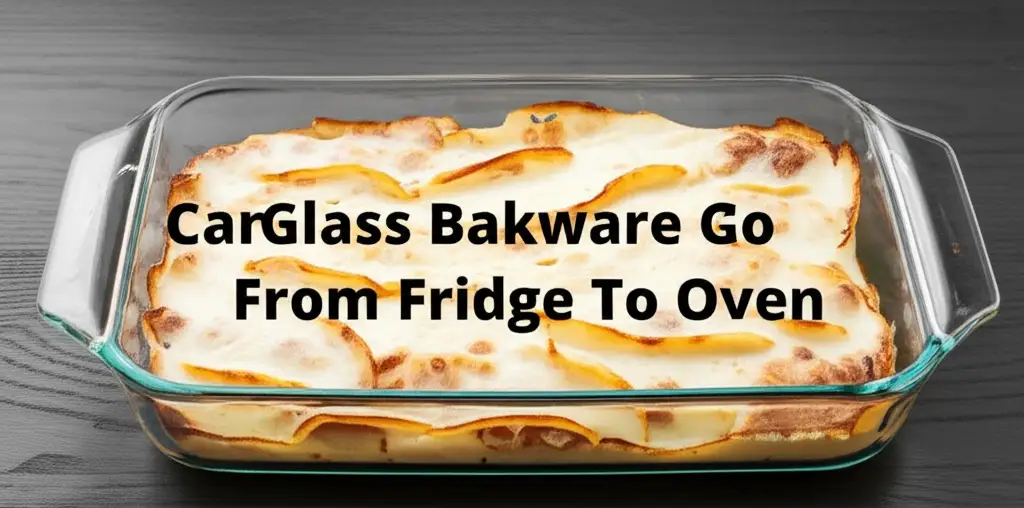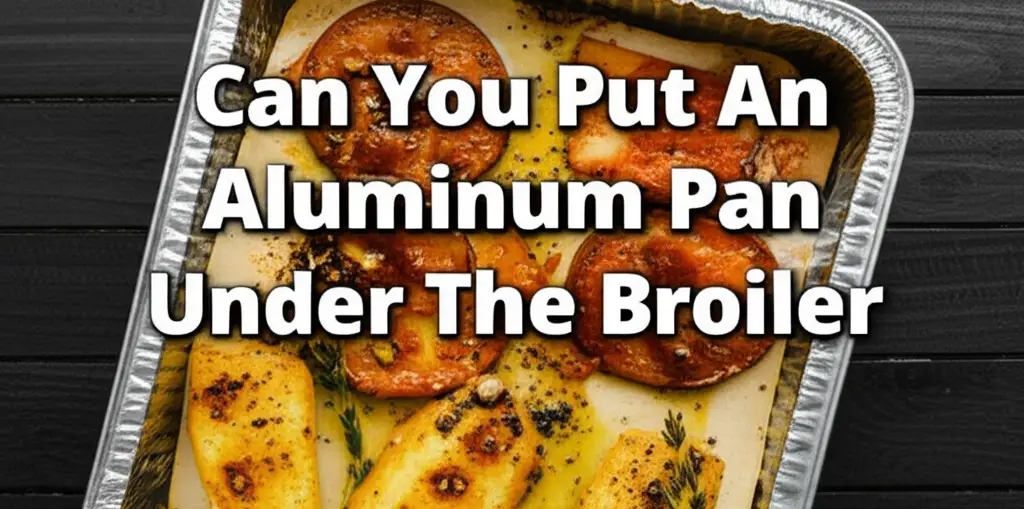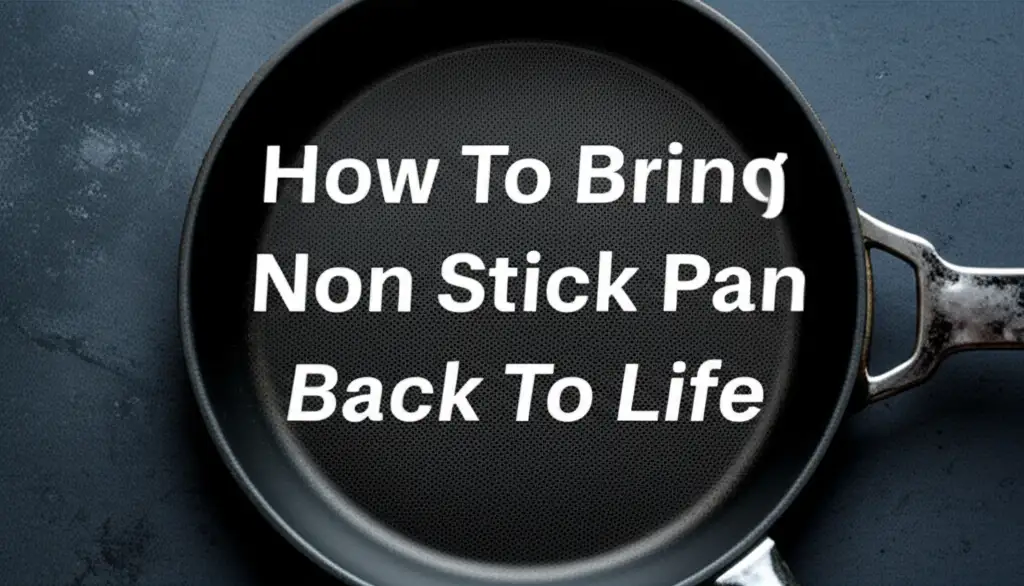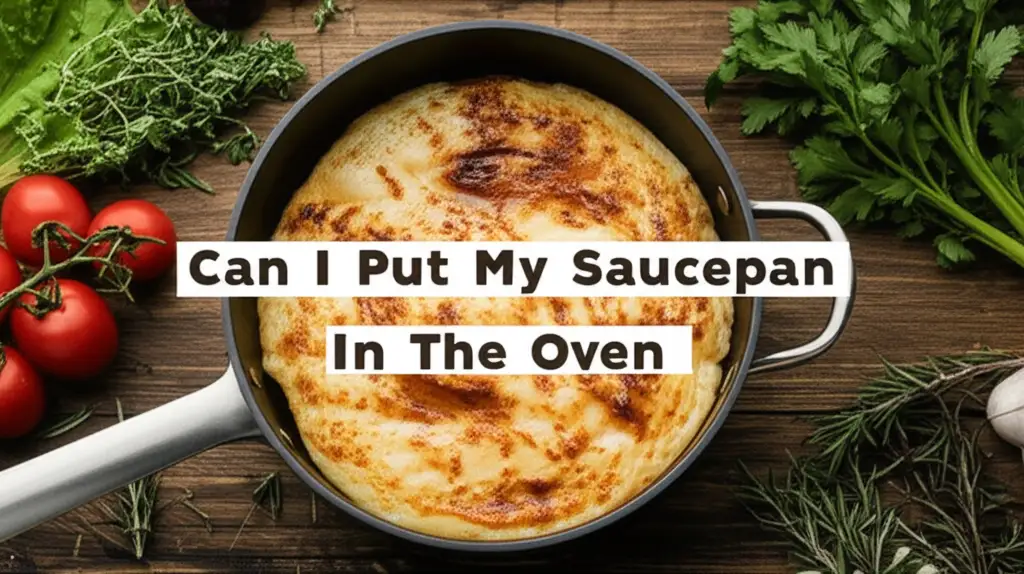· Katria Melrose · Kitchen Essentials · 19 min read
Can Glass Bakeware Go From Fridge To Oven

Can Glass Bakeware Go From Fridge To Oven Safely?
Imagine preparing a delicious casserole, letting it chill in the fridge overnight, and then thinking about popping it straight into a hot oven. It is a common kitchen scenario. Many home cooks wonder, “Can glass bakeware go from fridge to oven without issues?” This question is crucial for both kitchen safety and the longevity of your favorite baking dishes. The answer is not always a simple yes or no. It depends on several factors.
Understanding the properties of glass and how it reacts to rapid temperature changes is vital. Incorrect handling can lead to shattering, which is a significant safety hazard. This article explains the science behind thermal shock. We provide clear guidelines for safely transitioning your glass bakeware from the cold fridge to the hot oven. We also discuss common mistakes to avoid. By the end, you will confidently use your glass baking dishes. You can ensure they last for many years of delicious meals.
Takeaway
- Avoid extreme temperature changes with glass bakeware.
- Always allow glass dishes to reach room temperature before placing them in a preheated oven.
- Never put cold glass into a hot oven or vice versa.
- Preheat the oven with the glass dish inside if a recipe requires it.
- Inspect bakeware for cracks or chips before use.
No, you should not take glass bakeware directly from the fridge and put it into a preheated oven. This practice creates a rapid temperature change, known as thermal shock. Thermal shock can cause the glass to crack, shatter, or even explode. It is safer to allow the bakeware to reach room temperature first.
Understanding Thermal Shock in Glass Bakeware
Thermal shock is the main reason why glass bakeware can shatter. It occurs when a material experiences a sudden, drastic change in temperature. Glass expands when heated and contracts when cooled. If one part of the glass heats up much faster than another, it causes stress. This stress can become too great for the glass to handle. The result is cracking or shattering.
Think about a glass full of ice water. If you pour boiling water into it, the glass might crack. This is thermal shock in action. The same principle applies to glass bakeware. When a cold dish from the fridge meets a hot oven, the outer layer of glass heats very quickly. The inner layers remain cold for a short time. This creates immense internal tension. The glass cannot handle this tension, so it breaks.
Modern glass bakeware, often made from tempered glass or borosilicate glass, is designed to be more resistant to thermal shock. However, they are not immune. Even these types of glass have limits. Always be careful with extreme temperature changes. This care extends the life of your bakeware. It also keeps your kitchen safe. Understanding thermal shock is key to preventing accidents.
What Makes Glass Vulnerable?
Glass is a poor conductor of heat. This means heat does not spread through it quickly or evenly. When you place a cold glass dish into a hot oven, the outside warms up fast. The inside stays cold. This difference creates internal stress. It is like pulling something in two different directions at once. Glass is strong but brittle. It does not bend under stress. Instead, it breaks. Avoiding sudden temperature shifts protects your bakeware. It also prevents potential injuries in your kitchen.
The “No-Go” Scenarios: When Not to Transfer Glass Bakeware
Knowing when not to use glass bakeware from the fridge to the oven is as important as knowing how to do it safely. There are specific situations that dramatically increase the risk of thermal shock. Ignoring these warnings can lead to shattered glass, ruined food, and potential injury. Always prioritize safety in the kitchen.
First, never take a glass dish directly from a cold refrigerator or freezer and place it into a hot, preheated oven. This is the most common mistake. The temperature difference is too extreme. The glass will almost certainly crack or shatter. This applies even to high-quality tempered glass. The thermal stress is simply too much.
Second, avoid placing a hot glass dish onto a cold, wet surface. For example, do not put a baking dish fresh from the oven onto a damp countertop. The cold water can cause thermal shock. Use a dry trivet or a wooden cutting board instead. This protects both your bakeware and your countertops.
Third, never add very cold liquids to a hot glass dish. If you are deglazing a hot pan, use room-temperature liquid. Adding cold stock or water can cause the glass to break. Likewise, avoid putting a hot glass dish under cold running water for cleaning. Let it cool down gradually first. Following these simple rules prevents many common kitchen accidents.
Avoiding Common Thermal Shock Triggers
Many kitchen habits can unknowingly trigger thermal shock. Be mindful of these specific scenarios:
- Frozen to Hot Oven: Never transfer a frozen meal in a glass dish directly into a preheated oven. The food itself is a heat sink. It keeps the center of the dish colder for longer. This worsens the thermal stress. Always thaw frozen dishes completely in the fridge first. Then, allow them to come to room temperature.
- Cold Dish on Cold Oven Rack: Placing a cold glass dish onto a cold oven rack before turning on the oven might seem safe. However, if your oven preheats very quickly, the glass still experiences a rapid rise in temperature. It is safer to put the cold dish into a cold oven, then turn the oven on. The glass and the oven then heat up together. This allows for a gradual temperature increase.
- Uneven Heating: Sometimes, only part of the glass dish gets hot very quickly. For example, if you place a cold dish on a hot oven rack that only touches specific points. Or if a cold dish touches the bottom heating element directly. This uneven heating can create localized stress points, leading to cracks. Ensure the heat distributes evenly around the dish.
- Damaged Bakeware: A small chip or crack can weaken glass bakeware. These imperfections become stress points. When subjected to temperature changes, the crack can propagate rapidly. Always inspect your glass dishes before use. Discard any bakeware with chips or cracks. It is not worth the risk.
Best Practices for Safely Using Glass Bakeware from Fridge to Oven
Using glass bakeware safely involves understanding how to manage temperature transitions. It is possible to use your glass dishes from the fridge, but it requires patience and proper technique. These best practices help prevent thermal shock and ensure your bakeware lasts a long time.
First, and most important, always allow your glass bakeware to come to room temperature. This is the golden rule. If your dish has been in the fridge, take it out at least 30 minutes to an hour before baking. For frozen dishes, thaw them completely in the refrigerator first. Then, let them sit at room temperature. The larger the dish or the colder the starting temperature, the longer it needs to warm up. You can gently feel the dish; it should not feel cold to the touch.
Second, place the glass bakeware into a cold oven. Then, turn the oven on to preheat. This method allows the glass and the oven to heat up together slowly. The temperature change is gradual, minimizing thermal stress. This is often the safest approach for cold dishes. Avoid placing cold glass into an already hot oven.
Third, ensure even heat distribution. Make sure the bakeware sits flat on the oven rack. Do not place it directly on a hot oven element or coil. This can create hot spots and uneven heating. If your oven has a convection setting, it can sometimes help distribute heat more evenly, but the “cold to cold” rule still applies. By following these steps, you can greatly reduce the risk of your glass bakeware shattering.
Step-by-Step Safe Transfer
Following a simple routine can make fridge-to-oven transitions safe for your glass bakeware.
- Remove from Fridge/Freezer: Take your glass dish out of the cold storage.
- Achieve Room Temperature: Let it sit on the countertop for 30-60 minutes, or even longer for very large or frozen dishes. The dish should not feel cold to the touch. For frozen items, always thaw them first in the fridge, then bring them to room temperature.
- Place in Cold Oven: Put the room-temperature glass dish into a cold oven.
- Set Oven Temperature: Turn the oven on and set it to the desired temperature. The glass and oven will heat up together gradually.
- Cook and Cool: Once baking is complete, remove the dish carefully. Place it on a dry, heat-resistant surface like a cooling rack or a wooden trivet. Avoid wet or cold countertops. Do not immerse hot glass in cold water. You can find useful tips for bakeware cleaning, including how to clean Pyrex bakeware, once it has cooled completely.
Why Glass Bakeware Cracks: Common Misconceptions and Causes
Glass bakeware is a staple in many kitchens due to its versatility and ability to retain heat. However, its unique properties also make it prone to cracking under specific conditions. While thermal shock is the leading cause, it is not the only reason your glass dish might break. Understanding these factors can help you protect your investment.
One common misconception is that all glass bakeware is indestructible. While tempered glass is durable, it has limits. It is designed to withstand a certain degree of thermal change and impact. But it is not impervious to extreme stress. Another misconception is that a small crack or chip is harmless. Even a tiny flaw can compromise the structural integrity of the entire dish. Under heat, this small flaw can expand rapidly, leading to a complete shatter.
Besides thermal shock, physical impact is a significant cause of cracking. Dropping the bakeware, even from a short height, can create hairline cracks that are not immediately visible. These hidden cracks become weak points. They can fail when the dish is later subjected to heat or cooling. Always handle your glass dishes with care. Store them properly to prevent accidental bumps or drops. Uneven heating in the oven can also contribute to cracks. If a dish is placed directly over a hot spot or heating element, it heats up unevenly. This creates internal stress, similar to thermal shock. Always ensure your bakeware is positioned centrally on the oven rack.
Other Stress Factors for Glass Bakeware
Beyond sudden temperature changes, several subtle factors can contribute to glass bakeware cracking over time:
- Age and Wear: Like any kitchen tool, glass bakeware ages. Repeated heating and cooling cycles, even gradual ones, can slowly weaken the glass structure. Minor abrasions from cleaning or stacking can also contribute to wear.
- Manufacturing Defects: Although rare with reputable brands, sometimes glass bakeware can have tiny imperfections from the manufacturing process. These defects might not be visible but can act as stress points, leading to premature failure.
- Metal Utensils: While not directly causing cracks, scraping metal utensils against glass can create microscopic scratches. Over time, these scratches can weaken the surface, making it more susceptible to cracking under stress. Use wooden or silicone utensils when stirring or serving from glass dishes.
- Dishwasher Cycles: Modern dishwashers are generally safe for glass bakeware. However, excessive hot drying cycles combined with immediate cold water rinses (if something splashes) could theoretically contribute to subtle stress over time. Always ensure proper loading to prevent dishes from banging against each other.
Tips for Extending the Lifespan of Your Glass Bakeware
Glass bakeware is a valuable asset in any kitchen. With proper care, these versatile dishes can last for many years. Extending their lifespan involves more than just avoiding thermal shock. It includes mindful handling, cleaning, and storage. I have learned through experience that a little extra care goes a long way.
First, always handle your glass dishes gently. Avoid dropping them or banging them against hard surfaces. Even a small chip or crack can weaken the entire structure. When stacking, place a cloth or paper towel between dishes to prevent scratching. This simple step protects their surface.
Second, clean your glass bakeware properly. Let hot dishes cool completely before washing them. Never plunge a hot dish into cold water. For stubborn baked-on food, soak the dish in warm, soapy water. Avoid abrasive scrubbers or harsh chemicals that could scratch the glass. For specific cleaning methods, you can refer to guides like how to clean Pyrex bakeware. Using appropriate cleaning techniques keeps your bakeware looking new and prevents weakening its surface.
Third, store your glass bakeware carefully. Store it in a way that prevents it from touching other hard objects. If you stack pieces, use protective layers. This stops scratches and chips. Following these simple care routines ensures your glass bakeware remains a reliable tool for years to come.
Beyond the Basics: Advanced Care Tips
To truly maximize the life of your glass bakeware, consider these additional tips:
- Preheating Safely: If a recipe absolutely requires preheating the glass dish, place it in a cold oven and allow it to preheat with the oven. This ensures a gradual temperature increase, protecting the glass.
- Cooling Rack Usage: After removing bakeware from the oven, always place it on a cooling rack. This allows air to circulate underneath. It ensures the dish cools evenly. Avoid placing hot glass directly on cold or wet countertops.
- Avoid Extreme Temperature Zones: Be aware of cold spots in your kitchen. Do not place a hot dish near an open window in winter. Do not place it near a direct air conditioning vent. Sudden drafts of cold air can cause localized cooling and stress.
- Check for Compatibility: Not all glass is created equal. Ensure your glass bakeware is explicitly labeled “oven safe” or “tempered.” Some decorative glass dishes are not meant for oven use.
- Dishwasher Use: Most modern glass bakeware is dishwasher safe. However, ensure it is loaded properly to prevent contact with other items during the wash cycle. This prevents chips.
Alternative Bakeware Materials for High Temperature Transitions
While glass bakeware is popular, it is not always the best choice for every cooking scenario. Especially when dealing with extreme or sudden temperature changes, other materials offer greater resilience. Understanding the properties of alternative bakeware can help you choose the right tool for the job. Different materials have different strengths and weaknesses.
Metal bakeware, particularly stainless steel or aluminum, is an excellent alternative. These materials conduct heat very well. They heat up and cool down quickly and evenly. This makes them much less susceptible to thermal shock. You can often move metal pans from the fridge to the oven with minimal risk. They are durable and suitable for high-heat cooking. Some recipes benefit from the quick heat transfer of metal. For instance, can you put a stainless steel pan in the fridge? Yes, it’s generally safe due to its excellent thermal conductivity.
Ceramic bakeware is another option. It offers good heat retention, similar to glass. However, ceramic is generally more robust against thermal shock than standard glass. Still, it is not entirely immune. You should still exercise caution and avoid extreme temperature shifts. For example, do not take a cold ceramic dish directly into a very hot oven. Many ceramic dishes are designed for oven-to-table use. This implies a certain level of durability. Knowing your materials helps you cook safely.
Exploring Other Options
- Silicone Bakeware: Silicone is highly flexible and can withstand a wide range of temperatures. It is very resistant to thermal shock. You can often move silicone bakeware directly from the freezer to the oven without issue. It heats up quickly and cools down fast. Silicone is also non-stick, making cleanup easy. For more information on its versatility, you can check out whether silicone bakeware can go in an air fryer.
- Cast Iron: Cast iron is incredibly durable and excels at retaining heat. It can withstand high temperatures and is generally very forgiving with temperature changes. While it can go from fridge to oven, it takes a long time to heat up. It also takes a long time to cool down. It is an excellent choice for slow-cooked dishes or searing.
- Stoneware: Similar to ceramic, stoneware is a type of dense, non-porous clay. It retains heat well and distributes it evenly. High-quality stoneware is often quite resistant to thermal shock. However, like ceramic, it is still best to avoid extreme temperature shifts when possible. It is perfect for baking and serving.
- Porcelain Enamel: This is often found on cast iron or steel cores. The enamel coating provides a non-reactive surface. It is relatively resistant to thermal shock. But the core material’s properties still play a role. It provides good heat distribution.
Identifying Safe vs. Unsafe Glass Bakeware
Not all glass bakeware is created equal. Understanding the differences between types of glass is crucial for safety. Using the wrong type of glass in the oven can lead to dangerous situations. My personal rule is always to check the labeling. I want to be sure about the bakeware’s intended use.
The safest type of glass bakeware for oven use is typically made from tempered glass or borosilicate glass. Tempered glass undergoes a special heating and cooling process. This process strengthens it significantly. If tempered glass does break, it shatters into many small, relatively harmless pieces, rather than large, jagged shards. Brands like Pyrex (in the US) primarily use tempered soda-lime glass. Borosilicate glass, found in older Pyrex or some European brands, contains boron trioxide. This ingredient makes it highly resistant to thermal shock. It expands and contracts less with temperature changes.
On the other hand, untempered or annealed glass is not suitable for oven use. This type of glass is common in drinking glasses, decorative dishes, or storage containers not explicitly labeled oven-safe. It is much more prone to breaking from heat. Always check the bottom of your glass bakeware for markings. Look for “oven safe,” “tempered,” or a specific temperature range. If there are no markings, it is best to assume it is not oven-safe. When in doubt, do not use it in the oven.
Recognizing Safe Bakeware Markings
- “Oven Safe”: This is the most direct indicator. If your dish has this marking, it means the manufacturer designed it for oven use.
- Specific Temperature Ratings: Some bakeware might list a maximum safe temperature. Always stay within this range.
- “Pyrex” (US-made): Modern Pyrex sold in the US is typically made from tempered soda-lime glass. It is oven-safe but still susceptible to thermal shock if handled improperly (e.g., cold to hot oven).
- “Pyrex” (European/Older): Historically, Pyrex in Europe and older Pyrex in the US was made from borosilicate glass. This type is generally more resistant to thermal shock.
- No Markings: If a glass dish has no “oven safe” marking or temperature rating, assume it is not for oven use. This applies to most everyday drinking glasses, bowls, and decorative items. These are often made from untempered glass and can shatter violently in the oven.
- Visual Inspection: Before each use, visually inspect your glass bakeware. Look for any chips, cracks, or deep scratches. Even a tiny flaw can become a critical failure point under heat stress. Discard any damaged bakeware to ensure safety.
FAQ Section
Can I put frozen food in glass bakeware directly into the oven?
No, you should never place frozen food in glass bakeware directly into a preheated oven. The extreme temperature difference between the frozen food and the hot oven causes severe thermal shock. This will likely cause the glass to crack, shatter, or even explode. Always thaw frozen dishes completely in the refrigerator first, then allow them to reach room temperature before baking.
What is thermal shock?
Thermal shock is the rapid breaking or shattering of a material due to a sudden, drastic change in temperature. In glass, it occurs because glass expands when heated and contracts when cooled. If one part of the glass changes temperature much faster than another, it creates immense internal stress. This stress exceeds the glass’s strength, leading to breakage.
How long should glass bakeware sit out before baking?
Allow glass bakeware from the fridge to sit at room temperature for at least 30 minutes to an hour before placing it in the oven. For larger dishes or those coming from the freezer, it might need even longer. The goal is for the dish to feel neutral to the touch, not cold. This allows for a gradual temperature transition when baking.
Are all glass bakeware items the same?
No, not all glass bakeware items are the same. Most modern oven-safe glass bakeware is made from tempered soda-lime glass, which is strengthened to resist breakage. Older bakeware or some European brands might use borosilicate glass, which is more resistant to thermal shock. Decorative glass or everyday drinking glasses are often untempered and unsafe for oven use. Always check for “oven safe” markings.
Can glass bakeware explode?
While “explode” might be a strong word, glass bakeware can indeed shatter violently. When thermal shock causes glass to break, especially tempered glass, it can fragment into numerous small pieces that can spread widely. This poses a significant safety hazard. This is why following proper temperature transition guidelines is essential.
What temperature change can glass withstand?
The exact temperature change glass bakeware can withstand varies by type. Borosilicate glass can tolerate larger temperature swings than tempered soda-lime glass. However, no glass is entirely immune to thermal shock. As a general rule, avoid any sudden temperature change greater than 50-70°F (10-20°C) for most oven-safe glass. Gradual transitions are always safest.
Conclusion
The question of whether glass bakeware can go from fridge to oven is a common one. The direct answer is generally no, not without careful preparation. You must avoid sudden and extreme temperature changes. This practice prevents the dangerous phenomenon of thermal shock. Thermal shock causes glass to crack, shatter, or even explode. However, with the right approach, you can safely transition your favorite glass baking dishes from cold storage to the heat of the oven.
The key is patience. Allow your glass bakeware to reach room temperature before placing it into a cold oven. Then, let the oven and the dish heat up together gradually. Always inspect your dishes for any chips or cracks before use. Also, handle them gently during cleaning and storage. By understanding the properties of glass and following these simple safety guidelines, you protect your bakeware. More importantly, you ensure safety in your kitchen. Make smart choices about your kitchen tools. You can enjoy perfectly baked meals for years to come.





